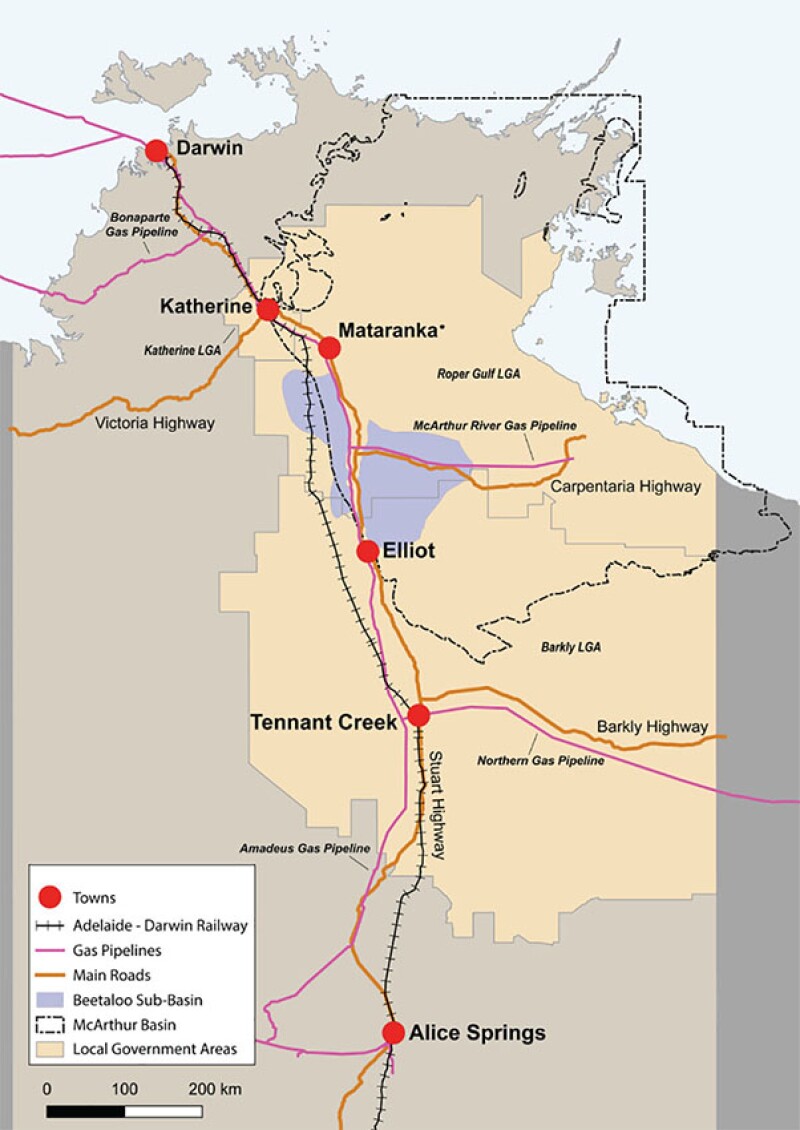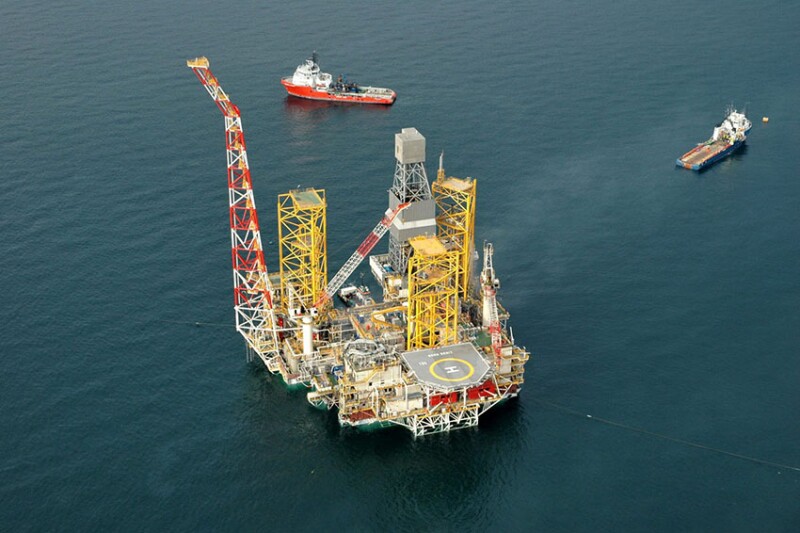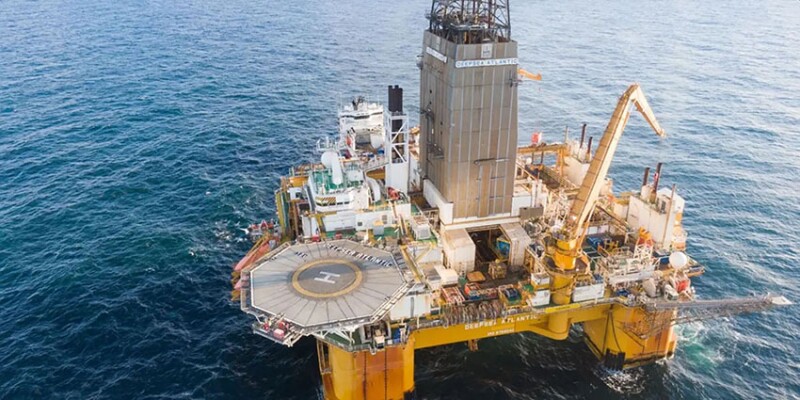Deepsea Atlantic Drills in the North Sea
Equinor and its partners have discovered oil and gas in the North Sea’s wildcat wells 35/11-30 S and 35/11-30 A (“Rhombi”) with an estimated recoverable volume of 2.0–4.5 million Sm3 (12.6–28.3 million BOE). Located within production license 090, the wells may be tied to existing infrastructure, including the Troll C platform, which processes resources from the Fram licenses nearby.
Drilled by the Deepsea Atlantic rig, the wells targeted the Upper and Middle Jurassic Sognefjord and Fensfjord formations. Well 35/11-30 S revealed 41 m of gas-filled sandstone and a 9-m aquiferous layer, while 35/11-30 A found a 43-m gas column and a 6-m oil column in the Sognefjord formation. In the Fensfjord formation, 35/11-30 S encountered a 72-m aquiferous layer, and 35/11‑30 A identified a 12-m oil column within a 100-m reservoir. Both wells were drilled to depths of approximately 2230–2260 m and were subsequently plugged and abandoned after comprehensive data collection.
Equinor serves as operator and holds 45% interest with Vår Energi ASA (40%) and INPEX Idemitsu Norge AS (15%).
ExxonMobil Announces Cyprus Exploration Plans
ExxonMobil plans to drill two offshore natural gas wells near Cyprus, named Pegasus and Electra, in January 2025. This effort aligns with global moves to diversify energy sources following disruptions caused by the 2022 Russian invasion of Ukraine. The East Mediterranean, known for recent gas discoveries, has become a strategic focus for energy companies.
ExxonMobil, which secured exploration licenses in Cyprus in 2017, discovered significant gas reserves at Glaucus in 2019, estimated to contain 5–8 Tcf. Pegasus, near Glaucus in Block 10, shows hydrocarbon potential based on seismic data. Electra, located in Block 5, is considered a promising prospect with the potential for standalone development, pending appraisal drilling.
“We’ve spent the last two years collecting very detailed, three-dimensional seismic data ... We’ve identified several large prospects, and the next stage is to bring in a drilling rig and to test those,” said John Ardill, ExxonMobil VP for global exploration.
Beetaloo Basin Drilling Begins
Empire Energy started drilling the Carpentaria-5H (C-5H) well in its 100%-owned EP187 permit in Australia’s Beetaloo Basin as part of the Carpentaria Pilot Project. The C-5H well aims to achieve Empire’s longest horizontal shale well, targeting a 3000-m drilled and cased horizontal section for increased gas production. Advanced techniques such as hydraulic stimulation with enhanced horsepower and slickwater design will be applied to boost productivity.
Empire targets first gas flow in H1 2025 with a sales rate of up to 25 TJ/day, leveraging the McArthur River Pipeline. The project involves field development planning, regulatory approvals, pipeline access negotiations, gas marketing, and financing preparations.
A $65-million financing package, including R&D funding, midstream infrastructure financing, and environmental bonding, supports drilling and infrastructure development. The Northern Territory Government has approved environmental plans for nine wells, a gas plant, and related facilities, though gas sales approval is still pending. The drilling of C-5H, led by Ensign Rig #965, is expected to reach a depth of more than 5000 m in 45 days.

Repsol Transfers Colombian Assets
GeoPark Ltd., an independent energy company operating in Latin America, signed agreements to acquire Repsol’s upstream oil and gas assets in Colombia for approximately $530 million. The deal includes a 45% nonoperated interest in the CPO-9 Block and a 25% interest in SierraCol Energy Arauca LLC, located in Colombia’s Llanos and Arauca regions. The Llanos basin is one of the country’s most productive oil regions where GeoPark holds existing operations in the region. These assets produced around 16,000 BOED net to Repsol as of September 2024.
The transfer of assets is expected to take place in Q1 2025.
BP Highlights Progress Across Multiple Projects
BP’s Q3 2024 report outlines significant progress in the Shah Deniz and Azeri-Chirag-Gunashli (ACG) fields in Azerbaijan’s Caspian Sea. At Shah Deniz 2, preparations are underway for the startup of a third gas production well on the East North flank. The Istiglal and Heydar Aliyev rigs have been actively drilling, performing decompletion and recompletion activities, and advancing well development on various flanks.
So far, 21 wells have been drilled for Shah Deniz 2 across the field’s different sections. Additionally, BP is analyzing data from the SDX-8 exploration well to appraise deeper reservoirs beneath the currently producing layers.
Production at the Azeri Central East (ACE) platform currently stands at 19,000 B/D, with plans to increase output to 24,000 B/D once a new well is drilled and brought online. This year, the ACG teams have completed 11 oil producers, two water injectors, and one cuttings-reinjection well.
In September, SOCAR, BP, and other ACG partners signed an agreement to explore and develop the nonassociated gas (NAG) reservoirs, which could hold up to 4.0 Tcf of gas. An initial well is being drilled from the West Chirag platform to produce gas and provide data for future development planning.

McDermott Receives FEED Contract for Gulf of Mexico Project
McDermott has received a front-end engineering design (FEED) contract from Repsol Exploración México for the Polok and Chinwol field development project in the Gulf of Mexico. McDermott will provide FEED services for the engineering, procurement, construction, and installation (EPCI) of subsea systems, including umbilicals, risers, and flowlines.
The Polok and Chinwol fields, discovered by Repsol in 2020, are part of Mexico’s Block 29 in the Salina Basin. Block 29, located off the coast of southern part of Gulf of Mexico, is 88 km from the state of Tabasco and covers an area of 3254 km2. The project is still in the exploration phase.
Repsol serves as operator and holds a 46.67% interest in the block with partners PC Carigali Mexico Operations (28.33%), Petronas’ Mexican subsidiary, and Harbour Energy (25%).
CNOOC Starts Production in Bohai Sea
China National Offshore Oil Corporation (CNOOC) started production at the Jinzhou 23-2 oilfield development project in the Bohai Sea. Located in the northern part of the sea with an average depth of 13 m, the project features two central processing platforms and plans for 67 wells, including 65 production wells and two water source wells.
It is expected to reach peak production of 17,000 BOE/D by 2027 with the field producing heavy crude. The project is China’s first multilayer heavy oil thermal recovery offshore project, using steam stimulation with chemical auxiliary flooding to improve oil extraction.
CNOOC serves as operator and holds 100% interest in the project.


